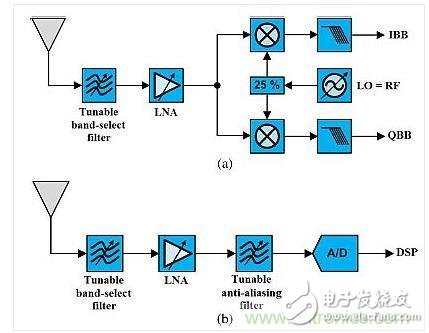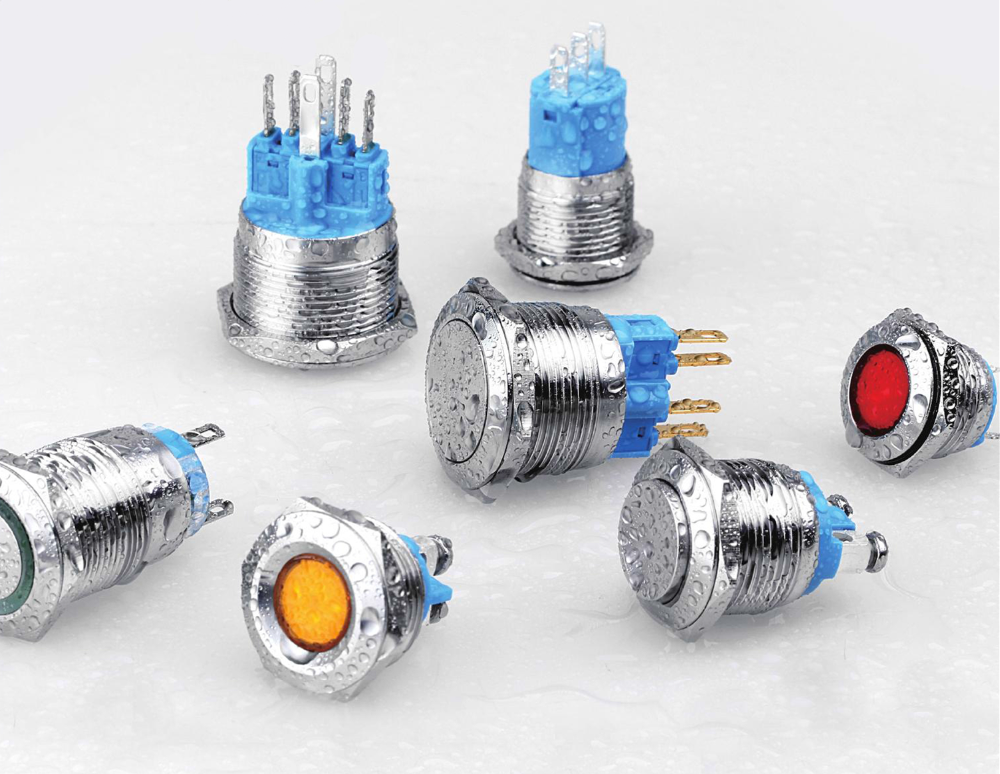In Long Term Evolution (LTE) Carrier Aggregation (CA) and later technologies, the need to support simultaneous multi-band operation by one antenna presents many additional challenges to filters and duplexers. Isolation loss and linearity are probably the most difficult to achieve. Reconfigurable radio is another path worth studying. As the radio spectrum becomes more and more crowded, smart cognitive radios are constantly attracting attention. The problem is that mobile phone manufacturers don't like to keep up with bandwidth demands by adding new models of phones. The cost performance of this method is not high.
The upcoming Carrier Aggregation and Multiple Input Multiple Output (MIMO) design can be used to meet temporary LTE-A and final 5G requirements. Smaller, lower cost filters are urgently needed in these new systems (Figure 1).

Figure 1: The RF front-end architecture for low-band frequencies (700-900MHz), from which the complexity of the RF front-end can be seen.
Tunable filters may be able to alleviate these design problems faced by engineers because they fit well into small, low-power handsets. This article will discuss the major innovations that a company called Resonant has made in this area. With 70 patents in place, the company may change the direction of RF front-end (RFFE) in mobile phones.
Filter architecture
Resonant has a very unique and robust surface acoustic wave (SAW) filter that is comparable in performance to a bulk acoustic wave (BAW) filter.

Figure 2: This figure shows the different ways to build an acoustic resonator.
Resonant's designers used an infinite integrated network (ISN) design methodology when developing the Band 3 duplexer, using a low-cost SAW process equivalent to or exceeding the BAW Band 3 duplexer (for mobile phones) This is the performance of a more costly solution).
Amplifier
In today's RF design environment, engineers design a power amplifier (PA) that can support multiple technology modes (such as CDMA, LTE, W-CDMA) and multi-frequency multi-band. This is the multimode/multiple frequency (MMMB) amplifier. A filter is required for each RF path, so this adds extra cost to the handset.
Unlimited Integrated Network (ISN)
Resonant is already trying to integrate modern filter theory with finite element models for electromagnetic and acoustic types, as well as innovative optimized algorithm groups. Resonant's very accurate filter model reflects the physical details of the filter structure, providing true filter performance in terms of loss, isolation, and power handling and linearity.
Because the optimization process can now be done on a computer without the need for multiple iterations of high cost in the foundry, designers can greatly reduce development time and complexity. An added benefit is that performance optimization designs and simulations can be performed over many temperature ranges before hardware is produced.
The design can be optimized for higher power consumption and higher temperature conditions such as LTE (the power consumption during LTE operation is higher than CDMA). Ultimately this will increase yields, which in turn will reduce production costs and result in faster return on investment (ROI).
Other architecture options
Reconfigurable radio
This radio architecture can increase spectrum efficiency and potentially reduce handset costs. The current multi-standard radio hardware and software architecture will not reduce the spectrum, and the number of next-generation standards will certainly increase significantly.
Software Defined Radio (SDR) has been suggested by many as a viable solution. The problem with this solution is that it is more demanding on the RF portion, requires a higher dynamic range, and requires a much higher power supply from the power supply. This is fine for laptops, but it is a problem for handheld devices. Due to the high bandwidth requirements, it is even impossible to achieve the wireless sensitivity of current mobile phones.
The reconfigurable radio will be able to select multiple frequency bands. The architecture of this solution integrates a tunable passive filter into the transceiver front end (Figure 3).

Figure 3: This architecture shows a reconfigurable radio using a tunable set of filters. (a) is a direct conversion design, and (b) is an RF bandpass sampling architecture.
The high dynamic range requirement is reduced by Figure 3a because this architecture helps to eliminate interference and blocking signals close to the signal of interest, so RF circuit saturation is less likely to occur in low noise amplifiers (LNAs) or mixers. . Analog-to-digital converters (ADCs) now do not require such high dynamic range, so they can be simpler and reduce costs.
22Mm Metal Switches
22Mm Metal Switches is a larger size in the Metal Switches serious. It is designed vary from people and regions and the design of larger operation button face is for increasing the convenience and comfort when operating.
In order to create more function and save more space for this , Waterproof Metal Switch, we adopt single and dual control design, so our one switch could have multiple purposes. This Stainless Steel Switch are widely used in human interface panel, it has P67 dust-proof and waterproof function, IK10 stainless steel material damage resistance level, advanced mechanical life.

In addition, in order to meet customer requirements, our larger Anti Vandal Switches has passed the EU green environmental protection RoHS certification, the US UL testing certification, IP67 certification and TUV certification.
Moreover, customers can choose the metal button with LED light indication according to their own product requirements. The LED lamp beads are all from international brand suppliers to ensure the high life of LED lamp beads and the long-term work without discoloration effect.

22Mm Metal Switches,22Mm Waterproof Metal Switch,22Mm Stainless Steel Switch,22Mm Metal Flush Push Button Switch
YESWITCH ELECTRONICS CO., LTD. , https://www.yeswitches.com